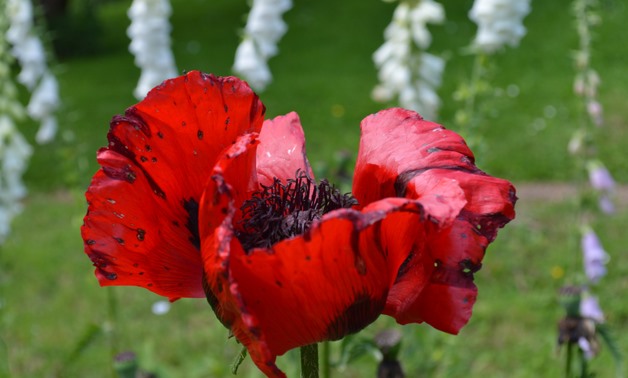
Flowers at Chalice Gardens in Glastonbury, England - Kamil Szczepaniak
ALEXANDRIA – 20 June 2017: Summer Solstice marks the longest day and the shortest night of the year in the northern hemisphere, while the opposite occurs on the Southern hemisphere. It occurs between June 20-22 in the northern hemisphere and December 20-23 in the Southern hemisphere.
This year, the summer solstice falls on June 21 and marks the first day of summer. The opening to the warmest months of the year is celebrated especially in countries where the four seasons are widely distinctive in temperature.
The history and monuments of ancient civilizations like the Mayas and Aztecs indicate that the day of solstice was significant and celebrated with ceremonies and offerings to the heavens.
Today, many people travel to enjoy watching the sun rising or setting at special locations, such as the ancient monuments holding precise alignments for that day: the Ajanta Caves in India, Machu Picchu in Peru or the Pyramids of Giza. At the site of Giza, when watching from the Sphinx, the sun will set between the two pyramids, providing a very unique sunset.
The summer solstice, also called midsummer, is believed to be a special time of the year and has a long history of celebration. In Ancient Egypt it was an important time marking the coming of the star Sirius, and soon after the Nile would flood to nourish the land, marking the coming of the New Year. For the Ancient Greeks the Olympics games would start exactly a month after the summer solstice. Romans dedicated this day to the goddess Vesta and celebrated women. Native Americans celebrate it today with circles of fasting, dancing and sun gazing. In Iranian belief, the solstice marks the birth of the light angel Mithra. In China, the summer solstice signifies the exchange of yin and yang balance when the dark gives way to the light and revolves around family gatherings with food.
In Europe, Celtic, Germanic and Viking traditions celebrated the night with the feasts and bonfires. In the Slavic parts of Europe, the night was believed to be special and the only time when the forest fern gives a flower. Legend says that those who find the fern flower would be granted precious treasures. The story was based on a belief that the special timing allows for miracles to occur – like the appearance of a flower on the ever-flowerless fern plant only on the exception of the special summer solstice night. While the magical flower remains a mysterious legend, more modern celebrations continue to set flower wreaths with lit candles on the rivers.
Many ancient traditions continue today, like cutting mistletoe by Druids or celebrating with a watermelon bite by Iranian Zoroastrianism; some have been adapted and new ones are formed.
 1. The sunrise over Stonehenge on the morning of the summer solstice – Andrew Dunn via Wikimedia Commons
1. The sunrise over Stonehenge on the morning of the summer solstice – Andrew Dunn via Wikimedia Commons
It is suggested that Stonehenge, a stone circle in Britain, was created to mark the summer solstice around 3,000-5,000 BC. Today, Stonehenge is one of the most famous places for summer solstice celebrations in the world with thousands gathering to witness the sun rising precisely between the stones.
Another popular location to watch the sun rising on the solstice is the Glastonbury Tor, where a variety of visitors gathers on the distinctive hill top providing a 360-degree panoramic view. Groups and individuals play drums and sing while witnessing the sun rising.
 Glastonbury Tor, England. Local residents and visitors climb the hill on the Summer Solstice - Kamil Szczepaniak
Glastonbury Tor, England. Local residents and visitors climb the hill on the Summer Solstice - Kamil Szczepaniak
Celebration of the summer solstice has many modern expressions, like playing a baseball game through the night in Alaska due to the brightness or a Fremont Bike Parade in the United States where the participants wear bright costumes and celebrity-like outfits. In New York’s Times Square, people gather each year to perform Yoga from the sunrise until sunset. After several years of this, June 21 became International Yoga Day.
Although the way of honoring the cycles of nature has changed through centuries and cultures, the message is encouraging to do something special and take notice if there is anything different on this day and night of the year. It is an opportunity to set a time for something special; whether planning time in nature, attending an event or a gathering, this time holds the promise to be different. Combined with the ongoing Ramadan it also makes it the longest day of fasting.
Decide for yourself if it feels any different during the nightly gatherings and activities.
 1. The sunrise over Stonehenge on the morning of the summer solstice – Andrew Dunn via Wikimedia Commons
1. The sunrise over Stonehenge on the morning of the summer solstice – Andrew Dunn via Wikimedia Commons

Comments
Leave a Comment